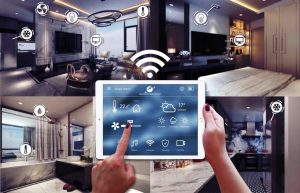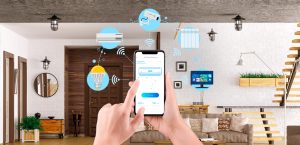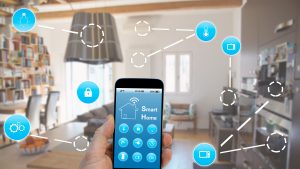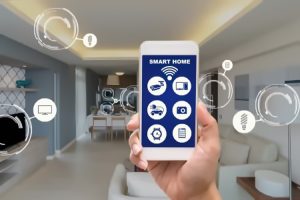Technology makes our lives easier, and smart homes are a big part of that change. In 2025, many people enjoy the convenience of smart devices like thermostats, cameras, and voice assistants. However, as Smart Homes become more advanced, questions about privacy grow. Are these devices watching your every move? In this article, we explore the privacy risks of smart homes and share useful tips to keep your personal data safe. We use simple words and clear examples so that anyone, including 10th-grade students, can understand.
Introduction

Smart homes offer great benefits. They help control lights, heating, security systems, and more with just a voice command or a tap on your smartphone. These devices make our daily lives smoother and more efficient. Yet, with these conveniences come concerns about privacy.
In recent years, reports have raised questions about how smart home devices collect data. Some worry that their gadgets might be “spying” on them. It is important to understand what smart homes do, what data they collect, and how you can protect yourself. As technology evolves, so does the need for better digital privacy.
Privacy in a smart home means having control over your personal data. You should know who can access your information and how it is used. In 2025, protecting your privacy is more important than ever. This article will explain common privacy risks and give you practical tips to secure your smart home.
What Is This and That

Before diving into privacy tips, let us define some key ideas in simple words.
What Are Smart Homes?
Smart homes use technology to control everyday devices. They include systems that manage lighting, heating, security cameras, and voice assistants. Smart homes offer convenience but also collect data about your habits and routines.
What Is Smart Home Privacy?
Smart home privacy means protecting your personal information from unwanted access. It involves controlling how data from your smart devices is collected, used, and shared. Good privacy practices keep your home and information safe.
What Is Digital Surveillance?
Digital surveillance refers to monitoring through digital devices. Some worry that smart devices may record personal conversations or track your movements.
How Smart Homes Work

Understanding how smart homes work is key to protecting your privacy. Smart devices connect to the internet and to each other. They use sensors, cameras, and microphones to gather information. This data helps them learn your preferences and automate tasks.
For example, a smart thermostat learns your schedule to adjust the temperature automatically. A smart speaker listens for voice commands and may send data to cloud servers for processing. Although these functions improve convenience, they also mean that personal information is shared online.
Privacy Risks in Smart Homes

Smart home devices offer many benefits, but they also come with privacy risks. One risk is data collection. Devices may collect detailed information about your habits, routines, and even your conversations. This data can sometimes be shared with advertisers or other third parties without your clear consent.
Another risk is unauthorized access. If your smart home system is not secure, hackers might gain access to your devices. This could lead to a breach of your personal space. For example, a hacker could view your home security camera feeds or control your smart locks.
Software vulnerabilities are another concern. Sometimes, smart devices have weak security that makes them easy targets for cyber attacks. Outdated firmware or poor password practices can increase the risk of intrusion.
Privacy Protection Tips

Protecting your privacy in a smart home is possible with some simple steps. Here are some practical tips to help you stay secure.
Secure Your Network
Start with your home network. Use a strong password for your Wi-Fi and change it regularly. Make sure your router’s firmware is up to date. A secure network is the foundation of smart home privacy.
Review Device Settings
Take time to review the settings on your smart devices. Many devices come with privacy options that let you control what data is shared. Disable features that you do not need. For instance, if a smart speaker records conversations, adjust the settings or disable the feature when not in use.
Use Two-Factor Authentication
Two-factor authentication (2FA) adds an extra layer of security. This makes it harder for hackers to gain access even if they have your password.
Regularly Update Your Devices
Manufacturers often release updates to fix security vulnerabilities. Make sure your devices are set to update automatically.
Limit Data Sharing
Be cautious about what personal information you share with your devices. Avoid linking unnecessary accounts or providing extra data if it is not needed. The less data that is shared, the lower the risk of privacy issues.
Use Privacy-Focused Brands
Research the brands behind your smart devices. Look for companies with strong privacy policies and good security practices. Some brands prioritize data protection and transparency. Choosing these brands can help safeguard your information.
Monitor Your Network
Use digital tools to monitor your home network for any unusual activity. Apps and security systems can alert you if there is unauthorized access. Being proactive in monitoring can help you quickly address any issues.
Practical Tips for Maintaining Smart Home Privacy

Maintaining smart home privacy is an ongoing process. Here are some simple tips to help you keep your digital space secure.
First, change your passwords regularly. Strong, unique passwords for each device reduce the risk of hacking.
Second, use a separate network for your smart devices if possible. This keeps them isolated from your personal devices.
Third, regularly check privacy settings on all your devices. Technology changes fast, and settings may need updating.
Fourth, educate yourself about new privacy threats. Stay informed by reading trusted sources on cybersecurity and digital privacy.
Lastly, don’t be afraid to reach out to customer support if you have questions about your device’s security. Most companies are willing to help their customers secure their smart homes.
A Relevant Table: Smart Home Privacy Protection Tips
| Tip | Description | Benefits |
|---|---|---|
| Secure Your Network | Use strong passwords, update router firmware regularly. | Prevents unauthorized access, strengthens overall security. |
| Review Device Settings | Check and adjust privacy options on smart devices. | Reduces data sharing, increases control over personal data. |
| Enable Two-Factor Authentication | Add an extra step to secure your accounts with 2FA. | Makes it harder for hackers to access your information. |
| Regular Updates | Keep all devices updated with the latest security patches. | Minimizes vulnerabilities, protects against new threats. |
| Limit Data Sharing | Share only necessary information with your devices. | Reduces risk of data misuse, enhances privacy. |
| Monitor Your Network | Use tools to watch for unusual activity on your network. | Quick detection of potential breaches, proactive protection. |
The Future of Smart Home Privacy

As technology evolves, so do the challenges and solutions for smart home privacy. In 2025, there is a growing focus on privacy in the design of smart devices. Manufacturers are increasingly aware of the need to protect user data.
Future smart home systems may include built-in privacy features that are easier to manage. For example, devices could come with enhanced encryption and more transparent data usage policies. Artificial intelligence might also be used to monitor and automatically adjust privacy settings based on your behavior.
Consumers are becoming more educated about digital privacy. This awareness drives demand for secure devices and better privacy practices. The push for stronger regulations and standards in the smart home industry is likely to increase. This trend will benefit users by creating a safer digital environment.
Balancing Convenience and Privacy
One of the challenges of smart home technology is balancing convenience with privacy. Many people love the ease of using smart devices, but they may worry about the data these devices collect. With the right tools and habits, you can secure your devices without sacrificing convenience. Regularly updating your settings, using strong passwords, and choosing privacy-focused brands are all steps that help maintain this balance.
Technology is here to make life easier, and with proper care, it can do so without compromising your personal information.
Real-Life Examples and Success Stories
Many people have successfully protected their smart homes by following these privacy tips. For example, one family set up a separate network for their smart devices and used two-factor authentication on all their accounts. They noticed a decrease in security alerts and felt more confident about their digital privacy.
Another example is a tech-savvy individual who regularly updated her devices and adjusted privacy settings on her smart speaker. She shared her experiences on social media, inspiring others to take their privacy seriously.
These success stories show that with a few simple steps, you can enjoy the convenience of smart technology while keeping your personal data safe. Everyone can benefit from these practices, no matter how tech-savvy you are.
Final Touches: Bringing It All Together
Smart home technology offers many benefits, but it is important to protect your privacy. By understanding how smart devices work and taking practical steps to secure your network and settings, you can prevent unwanted surveillance and data breaches. Digital privacy in 2025 is more important than ever, and the tips shared in this article can help you achieve a safer smart home environment.
Conclusion
In summary, safeguarding your smart home from unwanted data collection is vital. This article explored how Smart Devices work, the privacy risks they pose, and provided practical tips such as securing networks, reviewing device settings, and using two-factor authentication. By taking these steps, you can enjoy the convenience of a smart home while keeping your personal information safe. Embrace these privacy practices to protect your digital life and maintain control over your data.




